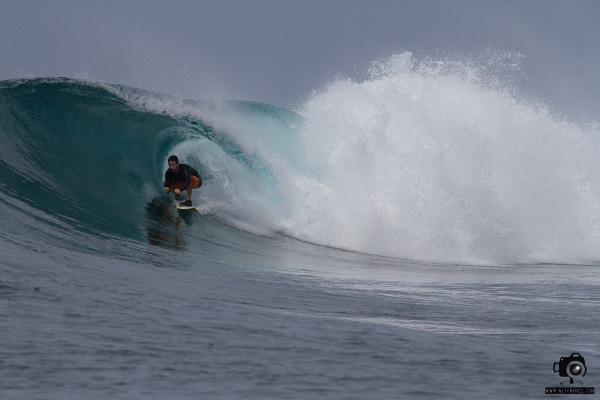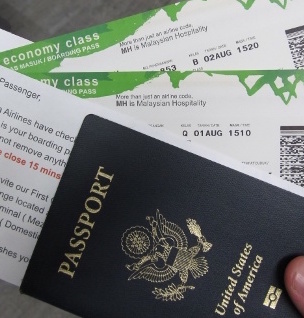SE Asia is a Playground for Outdoor Sports
[Photo Credit: Wet Frames Photography]
Pack your gear duffels and get to SE Asia.
Most people have heard about good surf in Indonesia or epic rock climbing in S. Thailand. But until you’ve been it’s hard to imagine the extent of the options, the incredibly low cost of living and traveling in the region, and the top-tier quality available for each sport.
I just completed 9 months traipsing around SE Asia, and I was initially stunned to find out how easy it is to set up a base of operations with a small amount of gear and tour the entire region.
You can fly just about anywhere for less than $200 (even booked 24h in advance), and virtually every sport is on tap: surfing, rock climbing, scuba diving, mountaineering, kiteboarding, sailing. The list goes on.
It’s an outdoor-sport junkie’s paradise. Below is a regional overview.
A few things to know about traveling in SE Asia:
- It’s exceptionally safe: Compared to most other places I’ve been there’s little need to worry about personal safety and in many places it’s unlikely for things to be stolen. Obviously there are exceptions to every rule, but not even Thailand’s military coup was a very big deal.
- Air travel is cheap: Check out the fares on AirAsia.com and Lion Air which are cheap and available same day. You can often find $200 one-way tickets crossing the entire region (e.g. Indonesia to N. Thailand)
- 2 wheels are the norm: Motorbikes are the primary mode of transportation and will be the most dangerous part of your trip. It’s easy to learn how to drive on the left side of the road, but be careful–almost everyone falls off at some point, and road rash, muffler burns (Thai tattoos), and major injuries are not unusual. You don’t need a motorcycle license or an international driver’s license to rent a motorbike (except Vietnam), but wear your helmet to avoid hassles with officials.
- Bring an unlocked phone or buy one: SIM cards are cheap and make logistics easier. An unlocked iPhone 5 will do the trick and give you access to time-saving Google Maps. Need an unlimited data plan so you can use your phone as a wifi hotspot? No problem, that will set you back about $25.
- Guest-stays vs Hostels: Hostels are less common in this part of the world. Good news is an apartment or home stay is often cheaper anyway.
- You will probably get sick at least once: Unless you have an iron stomach lining, and ultimately no matter how safe you are with food or avoiding ice cubes, you will probably have at least one bout of food or water-related sickness. It wasn’t a big deal: I was ill three times in nine months, never took antibiotics, and it was mostly over within 24 hours.
- Fly into regional hubs: The best pace to access the region are the hubs of Bangkok or Kuala Lumpur, and cheap flights are available to any other part of SE Asia.
1. Surfing: The Perfection of Indonesia
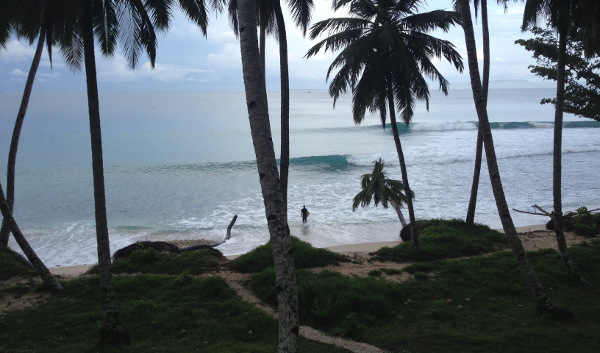
No surprises here: Indonesia offers the most perfectly-formed and consistent waves on earth. With a virtually uninterrupted swell season (March to November, with plenty of off-season bumps), an archipelago of thousands of mostly undiscovered islands, and warm water, it’s clear why many surf travelers find themselves stuck here indefinitely.
Most people fly into Bali, which is a good place to start considering the options for further travel and the availability of gear (you can easily buy new, custom, or second-hand surfboards here for a few hundred dollars). Most of the rest of Indonesia you’ll be hard-pressed to find essentials, so get them before you leave town.
While Bali offers beautiful scenery and some fantastic surf, many find it overwhelming: Kuta, the center of Bali, is an Australian Cancun, and most of the island sports some of the most crowded surf conditions on earth. But Bali does provide the option of extremely cheap but high-quality living, so it’s worth a look.
Leave Bali and the sky is the limit: take the ferry to Lombok, fly to Sumbawa, take a boat trip to G-Land, or hop over to Sumatra and plop down in a surf camp in the Mentawais.
A few things to know about surfing in Indonesia:
- Surfing over reef takes some getting used to: If you’re used to no-consequence waves you’re in for a surprise. Beginners should be extremely cautious and avoid low-tide. Wear reef-booties: nothing ends a surf trip faster than a big gash on your foot.
- Traveling around the region takes time: While it’s possible to fly cheaply on local carrier Wings Air/Lion Air, expect most trips to take a few days to get in and out.
- Many spots are remote: From where I wrote most of this post it’s a minimum 10-hour boat ride to the nearest hospital, and even there I’d be suspicious of undergoing major treatment.
- You probably don’t need anti-malarials, Japanese Encephalitis, or the rabies vaccine: Your Dr. will push them on you, but outside of the rainy season it’s just not necessary (*Disclaimer: don’t ever take my advice). Get some stylish “Indo”-pants and a long-sleeve shirt and skip the injections.
- Learn the language: Bahasa Indonesia is one of the easiest languages on earth to learn due to the absence of verb tenses and basic pronunciation rules. Learning just a little can help enormously if you get off the beaten path and it’s a great way to meet the locals. Best starter guide is Instant Indonesian.
2. Rock Climbing: Chicken Satay, Sticky Rice, Sea Views
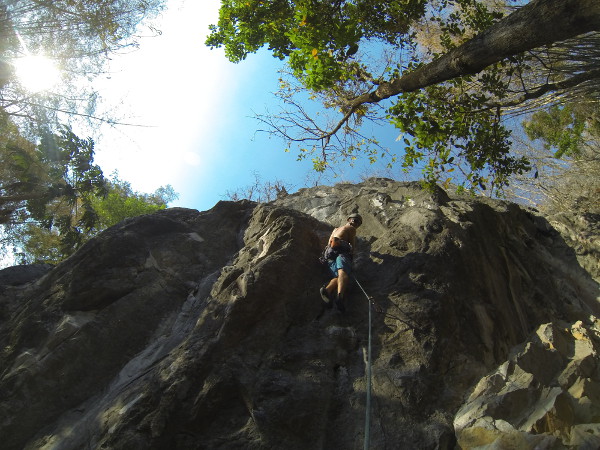
[Photo Credit: Marion Landon Photography]
If your dream is a bamboo hut and a climbing wall, with a beautiful beach to relax on and 3 squares a day, it’s hard to go wrong here.
You may remember the deep water soloing sequences from the 2006 film First Ascent, and the rock-climbing circuit here is well-worn: most travelers start in S. Thailand in the Krabi area, where Ton-sai and Rai Leh/Ao Nang offer up a tremendous number of routes with breathtaking sea-views. The migration tends to send climbers North to Chiang Mai and then to lesser known but apparently epic Laos.
From my experience, the fixed gear in these areas is extremely good: we were blown away by the quality of the bolts and the amount of ongoing maintenance at Crazy Horse Buttress (Chiang Mai), and to my knowledge most of the routes in S. Thailand have been re-bolted in the last few years.
There is also a surprising abundance of gear and affordable instruction (I deliberated on bringing climbing gear from the US. In the end I just bought what I needed upon arrival). In Chiang Mai, CRMCA offers up numerous courses and has a full climbing shop where I was able to fully equip for less than $200 (shoes, harness, helmet, chalk bag & chock, ATC+locking beaner, 3 slings). Prices were about the same as they are in the USA. Beginners need nothing more than to walk into one of these shops and sign up for an intro course to get started.
A few tips for rock climbing in SE Asia:
- Find partners everywhere: Traveling alone? No problem. After posting my information at the climbing gym in Chiang Mai I had 4 new climbing partners in less than 24 hours. And once you’re in the circuit you’ll see the same people all over the region.
- Bringing gear is cheaper, but you can buy what you need: Buying the whole kit will cost you, but I opted to buy the basics once I arrived and found a partner with a climbing rope and quick draws. It’s also possible to rent equipment for reasonable rates.
- Check out I love climbing for more beta around the region.
- Pay attention to seasons: Avoid the high-season in S. Thailand for 50% cheaper pricing on everything, but be prepared for some rain.
3. Kiteboarding: The best wind on earth?
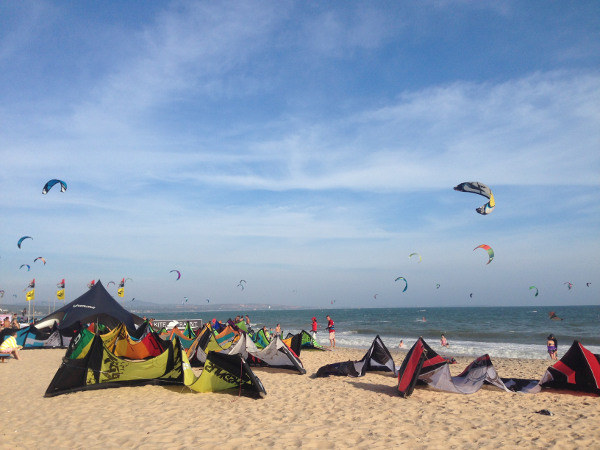
[Photo: Mui Ne, Vietnam. SpartanTraveler]
Before touring the area I had no idea that SE Asia was a kiteboarding mecca. I came to learn that both Vietnam and the Philippines are considered two of the world’s best wind spots.
Vietnam’s primary kiting destination is Mui Ne, which is just a few hours by train or bus from Saigon. The good news is, there’s plenty of wind and some opportunity for wave kiting. The bad news is, the town is somewhat played out with big hotels and development projects and a booming tourism industry the pulls in primarily Russian vacationers (to the point where you’ll find restaurant menus entirely in Cyrillic).
The Philippines is known for crystal-clear water and excellent wind, primarily in the beach resort of Boracay. While I didn’t have a chance to investigate the Philippines it’s high on the list for the next trip, and I’ve heard some very good thing about it.
Kiteboarding as a sport is definitely dependent on bringing your own gear unless you have a lot of money to drop. Renting is possible at exorbitant rates, no less than $50 an hour where I checked. I checked intro class rates in Mui Ne and they were standard: around $300+ to get started.
A few tips for kiteboarding in SE Asia:
- Escape the crowds: If you end up in Mui Ne, get away from the resorts and check the waves on the windward side of the peninsula.
- It’s easy to get around: Saigon and Manila are only a short flight away from anywhere in the region, so I’d consider checking out both if I were on a kiting trip.
- Better to take your own: There’s an unending amount of gear and instruction available for sale, but it will cost you a small fortune.
The tip of the iceberg
Despite spending a cumulative year in the region I’ve still only scratched the surface. Although SE Asia is further away for Americans than Central/South America and Europe, the cost advantages, ease of moving around the region, and excellent options for each activity make it well worth the trip.
If you have a favorite spot in the region, you should probably keep it to yourself :), but I’d love to hear about your general experiences in the comments.


